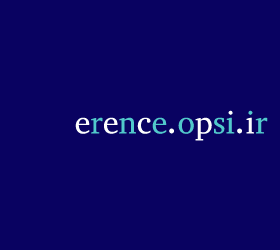Association Mission
The mission of the association is to advance the creation, communication and application of knowledge to benefit society and improve people's lives.
Membership
Contact Us
Volume 25 - ICOP & ICPET 2019
ICOP & ICPET _ INPC _ ICOFS 2019, 25 - ICOP & ICPET 2019: 1145-1148 |
Back to browse issues page
Download citation:
BibTeX | RIS | EndNote | Medlars | ProCite | Reference Manager | RefWorks
Send citation to:



BibTeX | RIS | EndNote | Medlars | ProCite | Reference Manager | RefWorks
Send citation to:
Noorafkan M, Manavizadeh N. Electrical Investigation of Plano-convex Lens Effect on Significant Parameters of Thin Film Silicon Solar cell. ICOP & ICPET _ INPC _ ICOFS 2019; 25 :1145-1148
URL: http://opsi.ir/article-1-1853-en.html
URL: http://opsi.ir/article-1-1853-en.html
1- Nano-Structure lab, Faculty of Electrical Engineering, K.N. Toosi University of Technology, Tehran, Iran
Abstract: (1750 Views)
In this paper, the performance of a thin film silicon-based solar cell in presence of Plano-convex lens on its top is investigated and simulated by a TCAD tool. This structure consists of conventional thin-film silicon solar cell and a silicon dioxide Plano-convex lens which is constructed by deposition and chemical etching of silicon dioxide on top of solar cell. The lens concentrates the incident light closer to the solar cell’s contacts; as a result, the performance of solar cell has been increased. Significant parameters of solar cells including short-circuit current, open-circuit voltage, Fill Factor and conversion efficiency are obtained as a function of lens thickness. Furthermore, the Dark/Illumination current ratio and External Quantum Efficiency (EQE) of a solar cell with and without lens are compared. Simulation results reveal that the lens thickness has a great impact on solar cell parameters and increases open-circuit voltage, short-circuit current and Fill Factor up to 0.412 V, 31.5 µA/cm2 and 0.7519, respectively. In the proposed solar cell, efficiency is enhanced more than 30% from its original value. Considering different lens thicknesses, 8µm is the optimal thickness for the lens. I-V characteristics under illumination for two structures, with and without a lens, are also studied. According to the results, an incrementally current shift with an increase of 50% exists with respect to the second case. By applying a Plano-convex lens to the solar cell structure, EQE reaches the maximum value up to 80%.
| Rights and permissions | |
 |
This work is licensed under a Creative Commons Attribution-NonCommercial 4.0 International License. |









